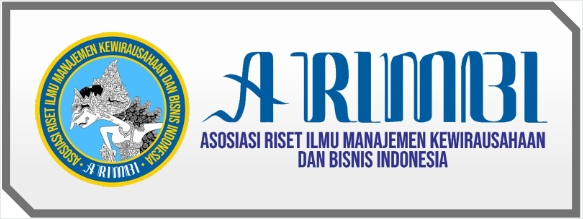Mediasi Kepuasan Kerja dan Stres Kerja pada Hubungan antara Program Jamsostek dan Kinerja Karyawan Studi Kasus pada Perusahaan Swasta di DIY dan Solo
DOI:
https://doi.org/10.30588/jmp.v3i1.89Keywords:
social security program, job satisfaction, performance, work stressAbstract
This study aims to explain the influence of the Social Security program on performance and job satisfaction and job stress as a mediating variable. In addition, this study also describes the effect of job satisfaction on the performance and the effect of work stress on performance. The relationship of each variable in this research is to be measured by conducting a survey on 145 employees of private companies that included in Social Security program on DIY and Solo. Then the path analisys used to test the effect of social security program performance in mediation by job satisfaction, performance and job stress, job satisfaction, and examines the effect on the performance and the effect of work stress on performance. The results showed that the social security program significant positively affects job satisfaction and performance. Job satisfaction was also positively and significantly affect performance. Even though mediating role of job satisfaction in the relationship between social security program performance partial. Because merely direct relationship between social security program with greater performance than the mediating role of job satisfaction. Social Security program did not significantly affect the stress of work, as well as job stress did not significantly affect performance. Therefore, the mediating role of work stress on the relationship between social security program with the performance did not occur. Individual differences and work experience may be a factor that causes no significant relationship between the two variables.References
Ahsan, N., Abdullah, Z., Yong Gun Fai, D., & Shah Alam, S. (2009). A Study of job stress on job satisfaction among University staff in Malaysia: Empirical Study European Journal of Social Sciences. 8, (1), 121-131.
Akinboye J. O., Akinboye, D. O & Adeyemo, D. A. (2002). Coping with stress in life and Work place. Ibadan: Stirling- Hordern Publishers (Nig) Ltd.
Boey, K.W. (1998). Coping and family relationships in stress resistance: a study of job satisfaction of nurses in Singapore. International Journal of Nursing Studies, 35, 353-361.
Burke, R.J. (1998). Work and non-work stressors and well-being among police officers: The role of coping. Anxiety, Stress and Coping, 11, 345-362.
Gellalty, Ian R & Irving P.,Gregory (2001), Personality, Autonomy and Contextual Performance for Managers. Human Performance, Vol. 43, No. 3. Pg. 231-245.
Gibson, Ivancevic, Donnelly & Konopaske (2004), Organizational Behavior, Structur, Processes. 11 th edition. McGraw Hill Companies.
Greenberg, Jerald & Baron, Robert A. (2003). Behavior in Organisation. 8th edition. Pearson Educational. Inc., Upper Saddle.
Hair, J.F. Jr, Anderson,R.E.Tatham, R.L. & Black, W.C. (2006). Multivariate Data Analysis, 6th edition. Upper Sddle River. Pentice Hall International, Inc.
Hasibuan, M.S.P. 2003. Manajemen Sumber Daya Manusia. Edisi Revisi. Bumi Aksara. Jakarta.
Hoppock, R. (1995). Job satisfaction. New York: Harper & Brothers Publishers.
Koeske, G.F., Kirk, S.A., Koeske, R.D., & Rauktis, M.B. (1994). Measuring the monday blues: Validation of a job satisfaction scale for the human services. Social Work Research, 18, 27-35.
Kuswadi. 2004. Cara Mengukur Kepuasan Karyawan. Penerbit Gramedia Pustaka.
Locke, E.A. (1977). The nature and causes of job satisfaction. In Dunnette, M.D. (Ed). Handbook of industrial and organizational psychology, pp. 1297-1349.
MacShane, Steven L,. & Von Glinow, Mary Ann. (2003). Organizational Behavior: Emerging Realities for The Workplace Revolution, 2nd edition, McGraw HillCompanies, Inc.
Mangkunegara, Anwar Prabu. 2005. Evaluasi Kinerja SDM, PT. Refika Cipta, Bandung.
Miao, C. Fred. Evans, Kenneth, R. & Zou, Shaoning (2007). The Role of Salesperson Motivation in Sales Control System-Intrinsic and Extrinsic Motivation Revisted, Journal of Business Research. Vol. 60. Pg. 417-425.
Robbins, dan Judge, Timothy. 2007. Perilaku Organisasi, edisi 12. Jakarta: Salemba Empat.
Stamps, P.L., & Piedmonte,E.B. 1986. Nurses and work satisfaction: An index for measurement. Ann Arbor, MI: Health Administration Press Perspectives.
Sulistyowati, Eny dan Widjajani, Susi (2012). Mediasi Kepuasan Kerja Stress Kerja Pada Hubungan Antara Self-Efficacy Dan Kinerja Penjual Jasa Asuransi. Hasil Penelitian Tahun 2012.
Vinokur-Kaplan J.X. 1991. “Job Satisfaction among Social Workers in Public and Voluntary Child Welfare Agencies”, Child Welfare, 155, pp. 81-91.
Downloads
Published
How to Cite
Issue
Section
License
Authors who publish with Jurnal Maksipreneur agree to the following terms:
Authors retain copyright and grant the Jurnal Maksipreneur right of first publication with the work simultaneously licensed under a Creative Commons Attribution 4.0 International License that allows others to share (copy and redistribute the material in any medium or format) and adapt (remix, transform, and build upon the material) the work for any purpose, even commercially with an acknowledgment of the work's authorship and initial publication in Jurnal Maksipreneur.
Authors are able to enter into separate, additional contractual arrangements for the non-exclusive distribution of the journal's published version of the work (e.g., post it to an institutional repository or publish it in a book), with an acknowledgment of its initial publication in Jurnal Maksipreneur. Authors are permitted and encouraged to post their work online (e.g., in institutional repositories or on their website) prior to and during the submission process, as it can lead to productive exchanges, as well as earlier and greater citation of published work (See The Effect of Open Access).























